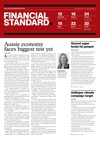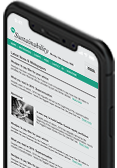Search Results | Showing 1 - 10 of 34 results for "cattle" |
| | | ... second most valuable service was grazed biomass - the amount of feed naturally produced by the environment for sheep and cattle - valued at $40.4 billion. ABS head of environment statistics Jonathon Khoo said this figure represents the estimated amount ... |
| | | | ... the most deforestation-prone countries, with land-use change being the prominent driver of nature loss. Industries like cattle, palm oil, soy, timber, cocoa, coffee, and rubber are the biggest drivers of deforestation, resulting in soil fertility decline ... |
| | | | ... help the company in its quest to supply Aussie agriculture with red asparaguses seaweed, which can reduce emissions from cattle by up to 80% when added to feed. The agriculture sector contributes to over 10% of Australia's greenhouse gases. "I've ... |
| | | | ... shareholder in each of the 20 companies." Of the asset manager's holdings in 20 companies in the palm oil, pulp/paper, soy, cattle, timber, and biomass, FOE found documented evidence of ecological harm and human rights abuses between January 2019 and ... |
| | | | ... Industries most destructive to nature include agriculture, infrastructure, and resource extraction -notably, palm oil, soya, cattle, and paper. In August, Woolworths' announced it will stop selling beef linked to deforestation, following pressure ... |
| | | | ... for the four highest risk commodities which drive two thirds of tropical deforestation. These commodities include soy, cattle products (beef and leather), timber products (timber and pulp and paper), and palm oil. The new EU law includes further provisions ... |
| | | | ... agro-business. Wollemi aggregates agro-climate and life-cycle emissions data for agricultural production sub-sectors, such as beef cattle, using a combination of public data and both public or open source data, which is also supplemented with high resolution ... |
| | | | ... soils over the five-year reporting period. The pair came up against seasonal challenges of dry weather and fluctuating cattle prices but implemented a series of land management practices and activities to improve soil conditions. This included subdivision ... |
| | | | ... funding is going into the forest assets, mining, and farming while the majority of European financing is going into the cattle and sheep sectors. Stepping into the role of the Lorax, Alex talks about the urgent need for investors and financiers to assess ... |
| | | | ... funding is going into the forest assets, mining, and farming while the majority of European financing is going into the cattle and sheep sectors. The research, launched this week at the Investor's Group on Climate Change (IGCC) Summit in Sydney ... |
|

















